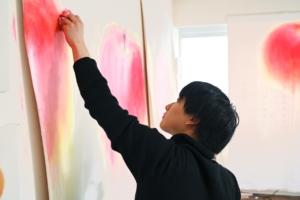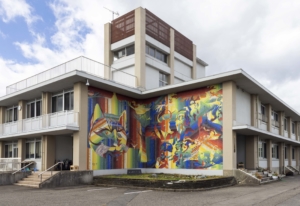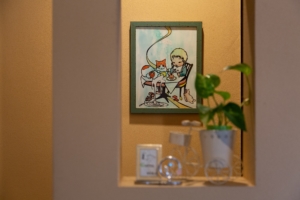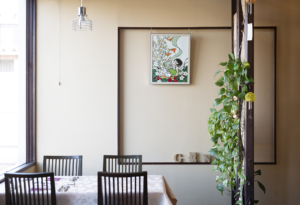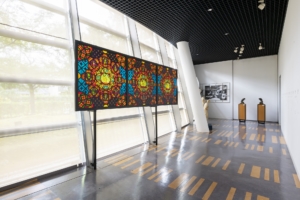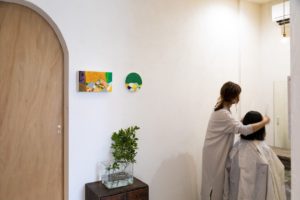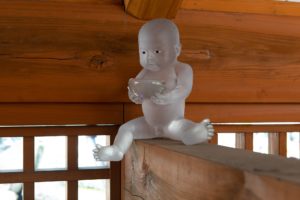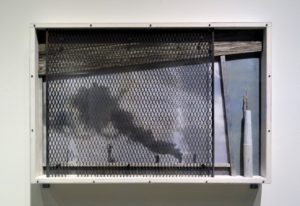Iwamoto Takashi(岩本宇司) is a sculptor who makes large rough pieces out of wood. He also presents pictures of the scenery in the city and drawings larger than his height. I visited Mr. Iwamoto’s studio to learn about the transition of his works.
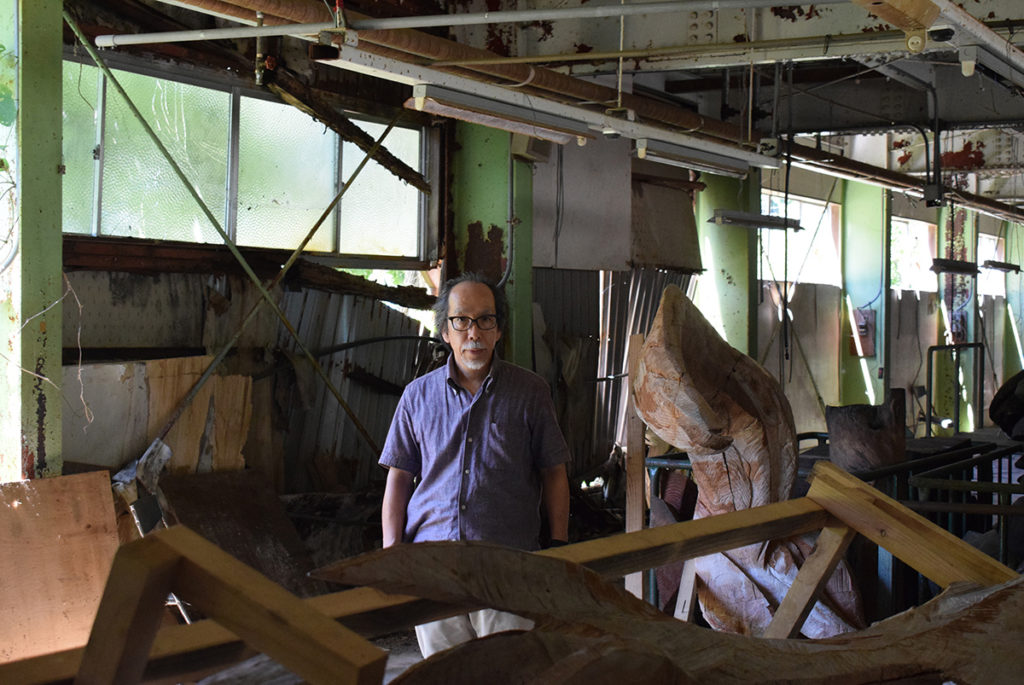
I am a land born and raised differently. My move was deeply involved in self-formation.
-Mr.Iwamoto, did you like art since you were young?
I remember my parents took me to an art museum when I was a child. But I wasn’t interested. But one day, I came across a picture by James Ansall. The picture came right into my eyes.
The senior I met in high school was attractive. He had a “new way of looking at things” “new perspective”.
After graduation, I worked on Yuzen-some in Kyoto. The Japanese aesthetic was interesting to me. When I came to Fukui, I thought, “I don’t use a paintbrush. But I want to make something.”.
-What did you get?
The first thing I got was a telephone directory. I made a work called ‘dragged phone book 1983’. I presented it in the gallery.
I dragged my phone book by motorcycle. Then the phone book showed me various expressions. it lost the meaning of the phone book and returned to a natural stack of paper.
-It’s an interesting development.
Inspired by this germination, I planted a plant on a chair and created a work combining “living thing” and “dead thing”. However, this work was laughed at as “Ikebana?”. I learned that there are limits to the combination of matter.
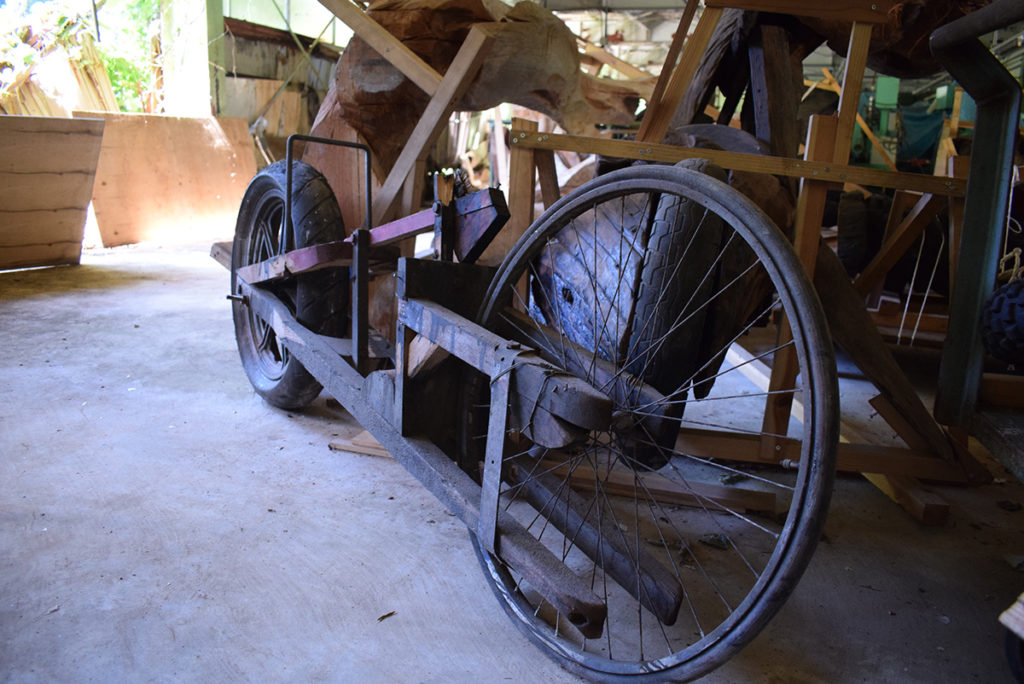
I want to create human existence with something that is not human.
-Could you tell me a little more about how to become the current sculpting style?
From the encounter of plants and trees, I began to make human shapes (piece) using waste wood. My hobby was bikes, so I made bicycles out of waste materials.
I was driven by an urge to make the most of what made me feel the existence of people. At any rate, people in their twenties and thirties continued to challenge themselves thinking, “I want to be free from restrictions.”. Especially, I was thinking about how to do with logs and square timbers.
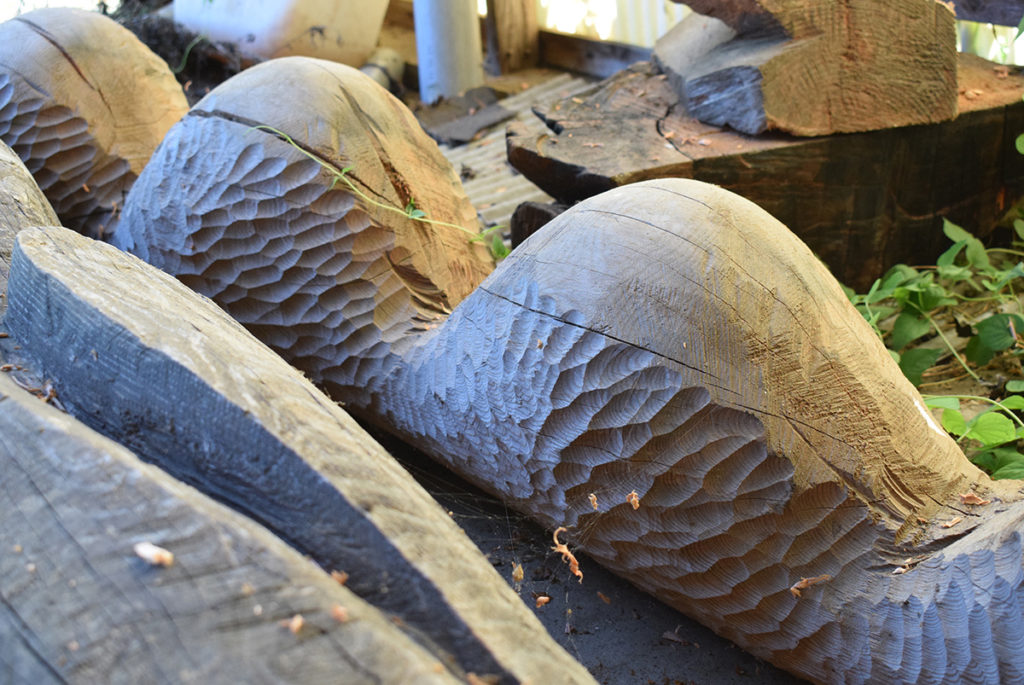
-What tools do you use to make sculptures?
I mainly use a chainsaw and a nata. I have used fleas before, but I can’t help but make my work more technical. The work is getting more and more neat. It was very dangerous. I was once told, “It’s a decorative work.”. After thinking about it, I took a camera in my hand for a while and started to express myself in pictures.
After working on sculpture, taking pictures, drawing, and sketching, I may have come back to sculpture.
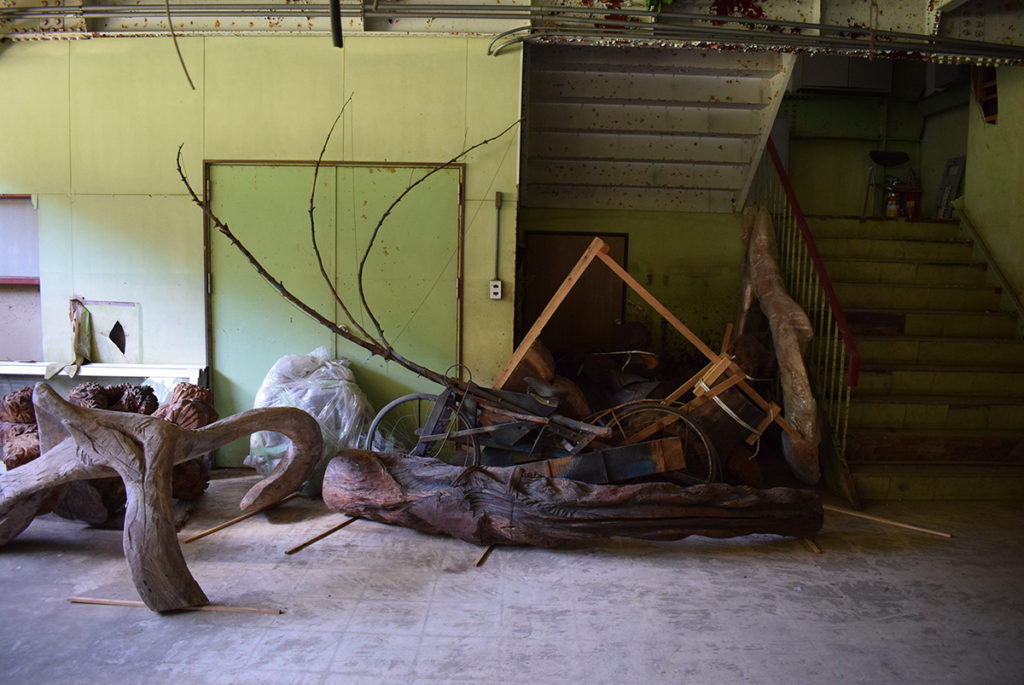
-What do you think is the origin of Iwamoto?
The starting point is to follow the telephone directory. It was interesting that the shape was different from the original. I will convert the tree to something different. I think about what I will rely on in the production process. I look for acts and randomness. I find the condition that the whole work resonates.
My sculptures have an irregular shape. Each has a face. The whole body is also good. I’m trying to see how much it will be scraped. Uncertain and incomplete, but looking for attractive condition. I don’t know if I can stick to this. I’m facing the tree.
Presenting a work in contemporary art is at least the beginning of the era. If you don’t have it, don’t do it. In my case, I am asking myself if I can open the door to the new era by getting involved with materials.
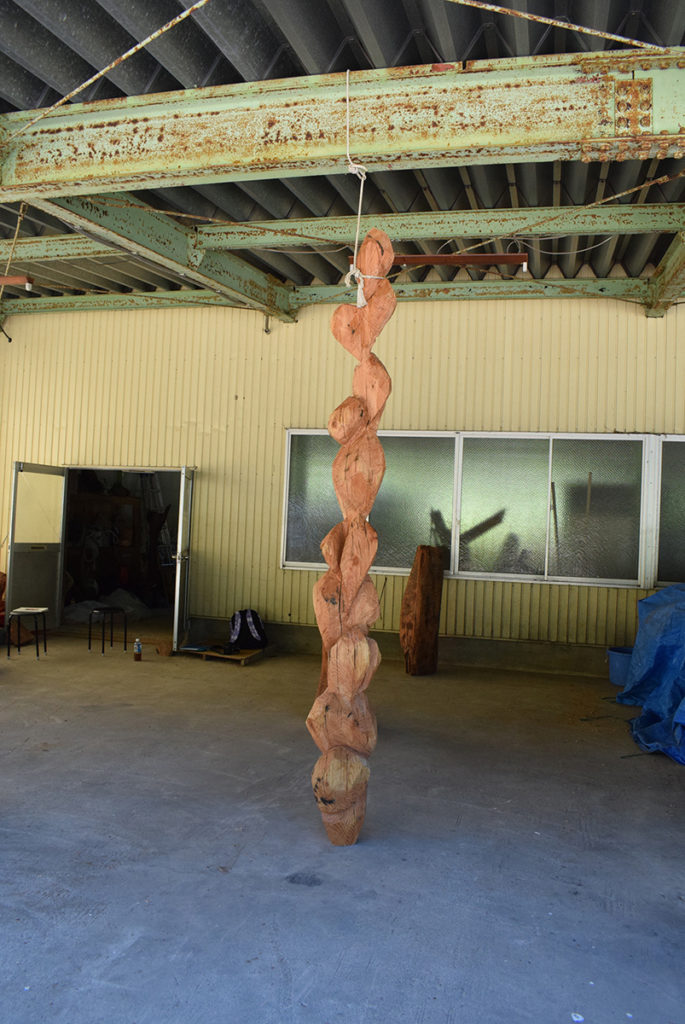
-What is the motive power of Mr. Iwamoto’s heart?
Another starting point is moving. When I was young, I had an experience of being taken away from the land and memories.
People who have a hometown do not collapse. Because they have nothing to be torn apart. Every time I moved, I was free. But I was constantly worried.
I asked myself, “How does it fit into the way we live and where we are?”. I thought, “How do you build yourself?”. With that in mind, I am going to produce it. I am convinced that no matter how bad it is, it is all right if the whole thing is balanced.
I noticed the possibility of planes from sculpture.
-The drawing is also very nice. It is big and I feel the power of being wrapped.
When I’m sculpting, I realize the freedom of paper. I thought of a work that could only be made with drawings. I want to draw the same size as a sculpture.
-How did you feel as a result?
The drawing is better than the sculpture. All you have to do is look at The drawing from the front. You can see the sculpture 360 degrees. You need a certain degree of frontality, but it won’t be the main thing in making a work. I have a lot of tools in my hands, but I have a break. I think it’s time to go back to sculpture. I dig up old sculptures and remake them.
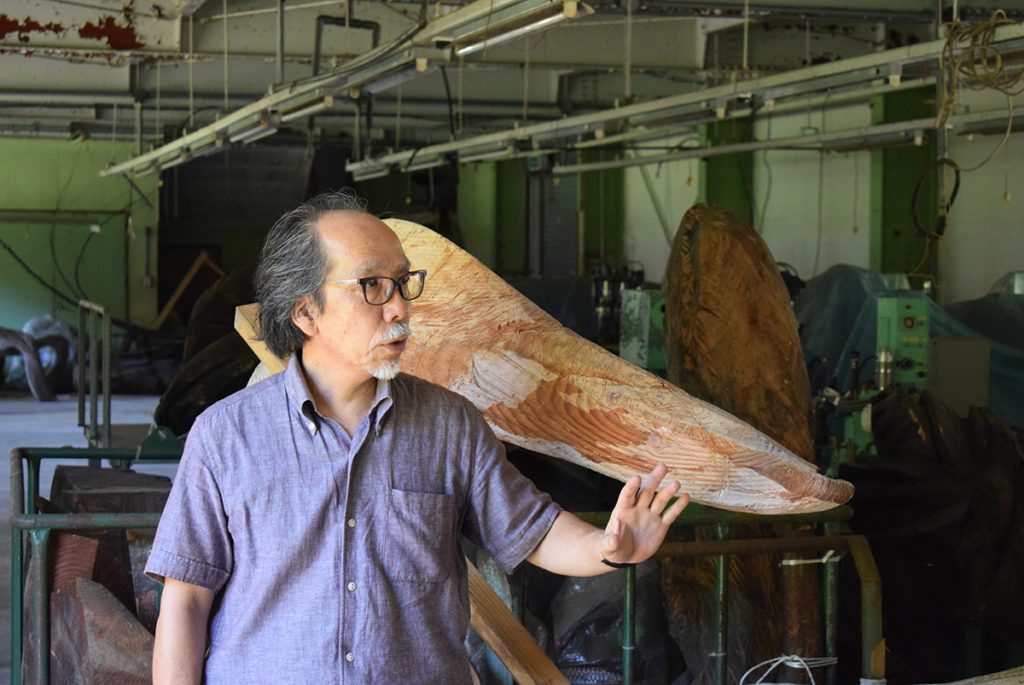
Profile
IWAMOTO Takashi (岩本 宇司)
Born in Fukuoka, Stay in Fukui Prefecture, JAPAN
Mr.Iwamoto was born in Fukuoka Prefecture. After graduating from Osaka University of Arts, he worked as an art teacher at a high school in Fukui Prefecture. After graduating from university, he worked at a dyeing studio in Kyoto, and when he got married, he moved to Fukui Prefecture. They are making sculptures that transform waste materials by cutting them with a chainsaw and a nata. He is also involved in photography and drawing. He has made many presentations at solo and group exhibitions in Japan and overseas.
Some of the works are sold on this site.
https://store.geisen.art/product-tag/iwamoto-takashi
